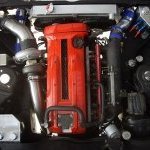"porting" Gtr Turbine Housings
Announcements
-
Similar Content
-
Latest Posts
-
By Murray_Calavera · Posted
Sounds good. I'm sure you'll be happy with the injectors, and it's nice having a little room to grow. -
The tuner I'm going to is reputable and has a lot of experience tuning road cars as well as race engines. I doubt he'll have an issue with it. I slightly adjusted the idle and cruise AFR targets so they get closer to what they're supposed to be but I'll let the expert correct the tables as I am way too inexperienced.
-
By Murray_Calavera · Posted
Oh, probably worth mentioning as well, my mixtures are perfect at idle. -
By Murray_Calavera · Posted
If your tuner can't make the car idle like factory, I'd get a new tuner. These injectors are fantastic and I'd have very serious concerns about a tuners skill set if they couldn't get them to idle well. -
It's highly likely you will find something. Alternatively, a quick design and order online from chaina and you'll have a perfect solution
-







Recommended Posts
Create an account or sign in to comment
You need to be a member in order to leave a comment
Create an account
Sign up for a new account in our community. It's easy!
Register a new accountSign in
Already have an account? Sign in here.
Sign In Now